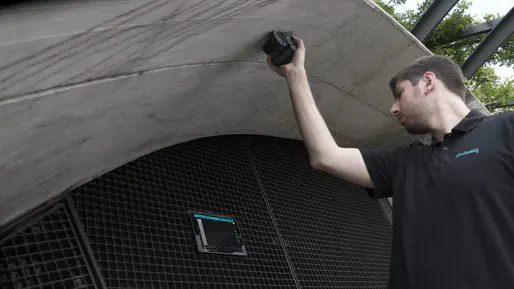Which options spring to mind when you think of buying a laptop for business purposes? For many people, who don’t know better, the main option is to trek to the nearest electronics store and select among the numerous overpriced and overpowered consumer-grade laptops on display.
Forget consumer-grade laptops
Such laptops are not built for reliability, and hence are what I call “garbage-grade”. You might get 5 years of operation out of them, or just a few months. When the CPU or the fan dies due to constant high temperatures, you are left with an expensive brick, with data on its soldered SSD. If you want to upgrade the RAM, you cannot, because the RAM is soldered onto the motherboard.
The vast majority of consumer-grade laptops are planned-obsolescence, low-quality, low-reliability, throw-away devices that cannot be repaired, cannot be easily replaced with the same model, cannot easily be data-salvaged, if the need arises. And, with the manic pursuit of featuring a thin chassis a-la-Apple, thermal management has gotten progressively worse; you are paying a premium for a laptop that features a 1.9 GHz CPU that temporarily overclocks to, e.g., 3.6 GHz with Turbo Boost, but cannot sustain these clock speeds for longer because it throttles due to overheating.
In short: you are overpaying for low reliability and low serviceability, paired with specs on paper that rarely deliver the claimed performance, which you anyway are not going to need for the workload typical of an SME office. Wasted money.
The evergreen laptop: pay once, get work done practically “forever”
Instead of overpaying for garbage-grade laptops in order to pay some more down the road for replacing them with newer garbage-grade laptops, I recommend instead to go back in time to a better era in PC technology, when some laptops were not as thin, but were not terribly less lightweight, and yet modular, and thus repairable.
For the office workloads typical of an SME, second-hand/refurbished Thinkpads of the 2011-2012 model years are way more than beefy enough to get everything done. Here’s why:
-
They are plentiful and widely available in great condition, as they were popular with corporations that bought/leased entire fleets, even for employees who, strictly speaking, didn’t need a laptop and thus kept their Thinkpad constantly docked.
-
They are modular and feature user-replaceable parts, so that you can exchange parts in case of wear/failure/damage; this includes batteries. Spare parts are plentiful and cheap, and can even be sourced from AliExpress for peanuts.
-
They are portable enough (in particular, the X-series models), so you don’t make such a drastic compromise on weight vs. e.g. a 13" Dell XPS or an Apple MacBook Air.
-
They have decent battery longevity under normal loads, especially with a 9-cell battery pack; for example, my i7 X230 lasts 4+ hours on a 9-cell battery that has degraded by 30%. And, if I need to replace it on the go, I can just slot in a new battery pack.
-
They are well supported for Windows 10 by Lenovo almost a decade after release, with BIOS and driver updates still coming out in recent months.
-
They are extremely well supported by the Linux kernel, as certain models were the “daily drivers” of some Linux kernel developers.
-
They are inexpensive due to a combination of high supply and low demand (compared to the mainstream garbage-grade options). Plus, second-hand/refurbished laptops are are not sought-after for office workloads, because most people don’t understand that the increases in PC performance in the past 7-8 years were a) not relevant for SME office workloads and b) partly gobbled up by software bloat in Windows 7/8 and, more recently, Windows 10.
-
They are not eye-grabbingly flashy, and thus less likely to be stolen if left unattended.
-
They feature power-sipping integrated graphics chipsets that are never going to let you down for office usage.
-
They have decently powerful CPUs and more than enough RAM for the purpose, as these model years were the last two with Intel’s Mobile CPUs; that’s right before every manufacturer (including Lenovo) decided to copy Apple in the Ultrabook product category powered by anemic, thermally-throttling ULV (Ultra-Low Voltage) CPUs and soldered, non-upgradeable SSDs and RAM sticks.
-
They have actual ports and not just one USB and one USB-C, and thus the only dongle nonsense you will face while on the road will be an inexpensive dongle from DisplayPort or Mini DisplayPort to VGA or HDMI.
-
The 2012 models (name ending in “30”) have USB 3.0, in case your office workload required transferring lots of data via an external hard drive.
-
They can be used on Lenovo docking stations that are also plentiful and inexpensive (see the first point).
In conclusion, here are my recommendations for second-hand/refurbished laptops perfectly fitting the typical SME:
-
A Thinkpad X230 is great for portability and is my number one recommendation.
-
A T430 is great for those who want a bit more screen real estate or improved visibility.
-
A T530 is great for those who rarely take the laptop with them and prefer a 15" screen.
-
A W530 can be had for relatively cheap with a quad-core i7-QM processor and Quadro graphics cards, for those who might need the machine for, e.g. CAD work.
Substitute “30” for “20” in all the above model designations for the 2011 models, i.e., if you want somewhat cheaper devices, and don’t care about USB 3.0.



